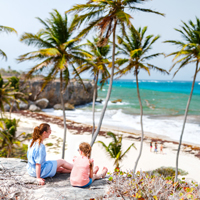| Cost of Living in Noosa Heads | |
| Apartment Rentals | The average rent for a one-bedroom apartment in Noosa Heads is around $400 per week. Two-bedroom apartments can cost up to $600 per week. Long-term rentals are also available, with prices ranging from $400 to $800 per week. |
| Apartment Purchases | The median price for a one-bedroom apartment in Noosa Heads is around $400,000. Two-bedroom apartments can cost up to $600,000. Prices for larger apartments can range from $700,000 to $1 million. |
| Transportation | Public transportation in Noosa Heads is limited. The closest major airport is the Sunshine Coast Airport, which is about an hour away. Taxis and ride-sharing services are available, but can be expensive. The cost of owning a car in Noosa Heads is relatively high, with fuel prices around $1.50 per liter. |
| Groceries | The cost of groceries in Noosa Heads is relatively high. A loaf of bread can cost up to $4, while a liter of milk can cost up to $2.50. A kilogram of chicken can cost up to $15, while a kilogram of apples can cost up to $7. |
| Restaurants | The cost of eating out in Noosa Heads is relatively high. A meal at a mid-range restaurant can cost up to $50 per person. A three-course meal for two people at a high-end restaurant can cost up to $150. |
| Utilities | The cost of utilities in Noosa Heads is relatively high. The average monthly cost for electricity is around $200, while the average monthly cost for water is around $50. Internet and phone services can cost up to $100 per month. |
| Private School Tuition | The cost of private school tuition in Noosa Heads is relatively high. Preschool tuition can cost up to $15,000 per year, while elementary school tuition can cost up to $20,000 per year. Middle school tuition can cost up to $25,000 per year, while high school tuition can cost up to $30,000 per year. |
Monthly Budget for Retirees in Noosa Heads
“The cost of living in Noosa Heads is considered to be relatively high compared to other parts of the country. This is largely due to its popularity as a tourist destination and the high demand for property in the area. Housing is the biggest expense, with both rental and purchase prices significantly above the national average. Groceries and dining out in Noosa Heads can also be more expensive than in other parts of Australia. This is partly due to the high-quality local produce and seafood available, as well as the abundance of upscale dining options. Transportation costs can vary, depending on whether you own a car or rely on public transport. Owning a car can be quite expensive, with costs for petrol, maintenance, and insurance to consider. Public transport is more affordable, but may not be as convenient for those living outside the town center.Healthcare in Noosa Heads is on par with the national average, with a mix of public and private healthcare options available. Overall, while the cost of living in Noosa Heads is high, many residents feel that the beautiful surroundings, relaxed lifestyle, and high quality of life make it worth the expense,” said one expat living in Noosa Heads.
Can I live in Noosa Heads on $1,500 a month?
“I’ve been living in Noosa Heads for a while now, and I can tell you that it’s possible to live on $1,500 a month, but you’ll have to make some sacrifices. Noosa Heads is a beautiful place with a lot of modern amenities, but it’s also quite expensive, especially when it comes to housing. If you’re looking for affordable neighborhoods, I’d recommend checking out Tewantin or Noosaville. They’re a bit further from the beach, but the cost of living is more reasonable.On the other hand, I’d avoid areas like Sunshine Beach or Little Cove, as they tend to be more expensive. Rent will be your biggest expense, so you’ll want to find a place that fits within your budget. You might have to settle for a smaller apartment or share a house with roommates to make it work.As for other expenses, you’ll need to be mindful of your spending on groceries, transportation, and entertainment. Shopping at discount supermarkets like ALDI can help you save on groceries, and using public transportation or carpooling can cut down on transportation costs. You might also have to cut back on dining out and opt for more affordable activities like hiking or going to the beach.In terms of sacrifices, you’ll likely have to give up some of the luxuries you’re used to, like having a large living space or eating out at fancy restaurants. But if you’re willing to make those adjustments, you can definitely make it work on $1,500 a month in Noosa Heads. Just be prepared to budget carefully and prioritize your spending,” commented an expat living in Noosa Heads.
Can I live in Noosa Heads on $3,500 a month?
“I’ve been living in Noosa Heads for a while now, and I can tell you that it’s possible to live comfortably on $3,000 a month, but you’ll need to make some sacrifices and be smart about your spending. Noosa Heads is a beautiful place, but it can be quite expensive, especially in certain neighborhoods.First, you’ll want to look for accommodation in more affordable areas. I’d recommend avoiding the neighborhoods around Hastings Street and Noosa Main Beach, as they tend to be more expensive. Instead, consider looking for a place in Noosaville, Tewantin, or even a bit further out in Cooroy or Pomona. These areas are still close enough to enjoy all that Noosa has to offer, but the cost of living is generally lower.Next, you’ll need to be mindful of your spending on food and entertainment. Eating out in Noosa can be pricey, so try to cook at home as much as possible and take advantage of the local markets for fresh produce. When you do go out, look for happy hour deals and specials to save some money. There are also plenty of free or low-cost activities to enjoy, like hiking in Noosa National Park, swimming at the beaches, or exploring the nearby hinterland.Transportation is another area where you can save money. If you can, try to get by without a car and rely on public transport, cycling, or walking instead. This will save you on petrol, insurance, and maintenance costs. If you do need a car, consider buying a used one to keep costs down.Finally, be prepared to make some sacrifices in terms of your lifestyle. You might not be able to afford all the luxuries you’re used to, like regular vacations or high-end electronics. But if you’re willing to live a bit more modestly, you can definitely make it work on $3,000 a month in Noosa Heads,” said one expat living in Noosa Heads.
Can I live in Noosa Heads on $5,000 a month?
“I’ve been living in Noosa Heads for a while now, and I can tell you that it’s definitely possible to live comfortably on $5,000 a month, even if you’re used to modern amenities. However, you might have to make a few sacrifices to make it work. For example, you might not be able to live in the most luxurious neighborhoods or dine out at fancy restaurants every night. But overall, you can still enjoy a great quality of life here.When it comes to finding an affordable neighborhood, I’d recommend looking into areas like Tewantin or Noosaville. These neighborhoods are a bit more budget-friendly compared to the more expensive areas like Noosa Heads or Sunshine Beach. You can find a decent 2-bedroom apartment in Tewantin or Noosaville for around $1,500 to $2,000 per month, which should leave you with enough money for other expenses like groceries, utilities, and transportation.On the other hand, if you’re looking for a more upscale neighborhood, you might want to consider Noosa Heads or Sunshine Beach. These areas are known for their beautiful beaches, trendy cafes, and high-end boutiques. However, the cost of living in these neighborhoods is significantly higher, with 2-bedroom apartments going for around $3,000 to $4,000 per month. If you’re set on living in one of these areas, you might have to cut back on other expenses like dining out or entertainment to make it work.In terms of transportation, you can get around Noosa Heads and the surrounding areas by car, bike, or public transport. If you’re planning on using public transport, a monthly pass will cost you around $100. If you prefer to drive, you’ll need to factor in the cost of fuel, which is currently around $1.50 per liter, as well as car insurance and maintenance costs.As for groceries, you can expect to spend around $100 to $150 per week on food, depending on your dietary preferences and how often you eat out. There are several supermarkets in the area, including Coles, Woolworths, and IGA, where you can find a wide range of products at reasonable prices.In summary, living in Noosa Heads on a $5,000 monthly budget is definitely doable, but you’ll need to be mindful of your expenses and make some sacrifices in terms of housing and lifestyle choices. By choosing a more affordable neighborhood and being conscious of your spending, you can still enjoy a comfortable life in this beautiful part of Australia,” commented an expat living in Noosa Heads.


